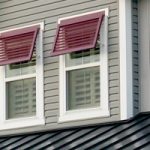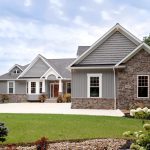
A Solution to the Affordable Housing Crisis
By Don Browne
Anyone who’s ever built a house or remodeled knows that vinyl siding has traditionally been one of the most affordable of all claddings.
But with the workforce housing crisis shining a giant light on the rising cost of building materials, the Vinyl Siding Institute (VSI) felt compelled to commission an independent exterior cost study which proves that prohibitions on the use of vinyl siding and the mandating of brick products are the real culprits in driving home prices up unnecessarily.
The analysis, conducted by renowned economist Dr. Elliott Eisenberg, focuses on 12 housing markets in the Northeast, Southeast and Midwest (four in each region). It includes standard vinyl, premium vinyl, polypropylene, fiber cement, brick, stucco and cedar clapboard, representing 99.9% of all exterior cladding choices used in single-family homes. The data utilized came from the U.S. Census Bureau Survey of Construction (SOC) and RSMeans cost data for each of the seven exterior categories in each of the 12 market cities, with costs weighted by geographic location. The differential between the lowest cost product, standard vinyl siding and all other exterior types was calculated to determine a second cost category: the additional monthly payment on a typical 6.5% 30-year mortgage, along with full amortized cost over 30 years.
The study results showed that standard vinyl, premium vinyl and polypropylene siding were among the four most affordable cladding options, with premium vinyl representing the second lowest cost. In geographically weighted costs, standard and premium vinyl siding were more than $25,000 less costly than brick and $30,000 less expensive than wood siding, Cedar Grade A, while polypropylene came in lower than brick by more than $15,000 and lower than wood siding, Cedar Grade A by more than $20,000.
For 30-year amortized costs, brick and wood are more than $40,000 more expensive. Stucco compares better but is still more than $10,000 higher (on average) than polypropylene. Fiber cement (painting included) beats polypropylene by $3,000 to $5,000 in geographically weighted costs and amortized costs but is more expensive than premium and standard vinyl siding by more than $5,000 in geographically weighted costs and more than $12,000 in amortized costs.
The most compelling statistics are the additional monthly costs these claddings contribute to a 30-year mortgage. Brick and wood siding both add $166+ per month ($45,000 + over 30 years), while stucco and fiber cement add $68 and $40 per month, respectively (equaling increases of $24,480 and $14,400 over 30 years). Premium vinyl siding only adds $6 per month over standard vinyl siding or $2,160 over 30 years.
Keep in mind that this analysis only factors cost and not the superior performance benefits of polymeric (e.g. vinyl, polypropylene) products in relation to their competitors. So, on top of the significantly higher costs other materials contribute to new home mortgages, one should factor in the costs of remodeling after 10-25 years. In contrast, vinyl siding’s performance life ranges from 50 to 75 years.
But if we focus on cost alone, the differences in pricing between vinyl siding and the competition – even with premium vinyl siding – are staggering. This begs the question: Would there even be an affordable workforce housing crisis if so many states did not allow local governments to prohibit the use of polymeric exteriors on new construction and renovation projects?
Click here to download a copy of An Analysis of the Affordability of Various Exterior Cladding Options for New Residential Construction.

